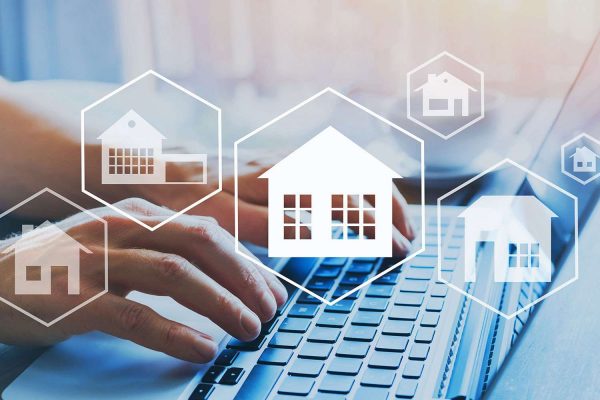Would you like to build a business around enabling landlords and real estate companies to manage their property? This article shares tips for “how to” create a property management solution, and starting a profitable venture based on that. But first, we’ll explain what a property management solution is.
Read more about Real Estate
What is a Property Management Solution?
A property management solution is a comprehensive software system designed to facilitate the management and operation of real estate properties. It provides property managers, landlords, and real estate professionals with the tools they need to efficiently handle various tasks associated with property management. These tasks include tenant communication, lease administration, maintenance scheduling, financial management, and reporting.
Whether you are managing residential, commercial, or mixed-use properties, an efficient system can make a significant impact. You have to target a lucrative market because property managers use these platforms, and, if you come up with this application. Are you interested in creating a property management solution? Here are ten steps to doing just that.
Know What’s Required
You need to know what your solution will include and do, and what’s needed to get it off the ground. Start by identifying the core features necessary for your solution. These functionalities typically include property listings, tenant management, lease tracking, maintenance requests, financial reporting, and communication tools. Also, ensure that the system you design is scalable and flexible to accommodate growth and diverse property types and management styles.
Carry Out Market Research
Next, carry out thorough market research and planning. Take a close look at existing solutions in the market to identify their strengths and weaknesses. This will help you find gaps that your solution can fill. Understanding your target audience is also essential; think about whether your solution will serve small property owners, large property management firms, or both.
Choose Your Technology Stack
Selecting the right technology stack for your solution is the next crucial step. For the frontend, modern frameworks like React, Angular, or Vue.js are ideal for creating a responsive and interactive user interface. On the backend, consider using scalable and efficient server-side technologies such as Node.js, Django, or Ruby on Rails. For database management, relational databases like PostgreSQL or MySQL are suitable for structured data, while NoSQL databases like MongoDB offer flexibility. You will almost certainly contract this to professional developers, but it’s always a good thing to have at least a fair idea of what they’ll be working on.
Create Your Platform Architecture
Something else you’ll have to do is design the architecture of your property management solution. Here, you should go for a modular design where different components, such as tenant management and maintenance tracking, can operate independently. Develop robust APIs to facilitate integration with third-party services like payment gateways, CRM systems, and marketing tools.
Sign up for the Connect Nigeria daily newsletter
Develop Core Features
Once the architecture is in place, focus on developing core features. These include:
- Detailed property listing system that includes photos, descriptions, and virtual tours.
- A tenant management system that maintains a database of tenant contact information, lease details, and communication logs.
- Tools for lease tracking to monitor terms, renewals, and expirations.
- A maintenance request system that allows tenants to submit requests and track their status in real-time.
- Robust financial management capabilities, covering rent collection, expense tracking, and financial reporting.
- Communication tools that enable seamless interaction between property managers, tenants, and service providers.
Design User Interface
User experience and interface design are critical for ensuring ease of use. If you’re going to make them work, you should fashion a user-friendly interface with intuitive navigation. This will ensure the platform is fully responsive and accessible on all devices, including desktops, tablets, and smartphones. Providing customization options for dashboards and reports allows users to tailor the system to their specific needs.
Implement Security Measures
Your platform has to be secure; it’s a minimum requirement for a decent technological product. You can put encryption protocols in place to protect sensitive data during transmission and storage. Also, implement role-based access control to ensure only authorized personnel can access specific data and functionalities. Make sure to conduct regular security audits and vulnerability assessments to identify and mitigate potential risks.
Test Your Solution
Before launching your solution, you’d do well to test it. Utilize automated testing tools for unit tests, integration tests, and end-to-end tests for correct system functions. Then, launch a beta version to gather feedback from real users, making necessary improvements based on their input. You should also carry out performance testing to ascertain that the system can handle high loads and peak usage without issues.
Deploy and Maintain the Solution
As time goes on, you will have to implement updates and incorporate new features into your platform. You may use monitoring tools to track system performance and user activity and analyze this data to make informed decisions for future enhancements. Also offer customer support through various channels like email, chat, and phone to assist users with any issues they encounter. This way, you’ll earn their trust and build a loyal customer base.
Come Up with a Marketing Strategy
Finally, develop a marketing strategy to promote your solution. It should resonate with the market you’re trying to engage. Leverage digital marketing, social media, and industry events to reach them. As your user base grows, ensure your infrastructure can scale seamlessly to accommodate increased demand.
Register to attend the CN Business Mixer
Final Words
If you’re going to build a property management solution, you will have to carefully plan the entire process and execute it with care and tact. Follow the steps we’ve shared here to create a comprehensive and efficient system that meets the demands of property managers and tenants alike.
Got a suggestion? Contact us: [email protected]


